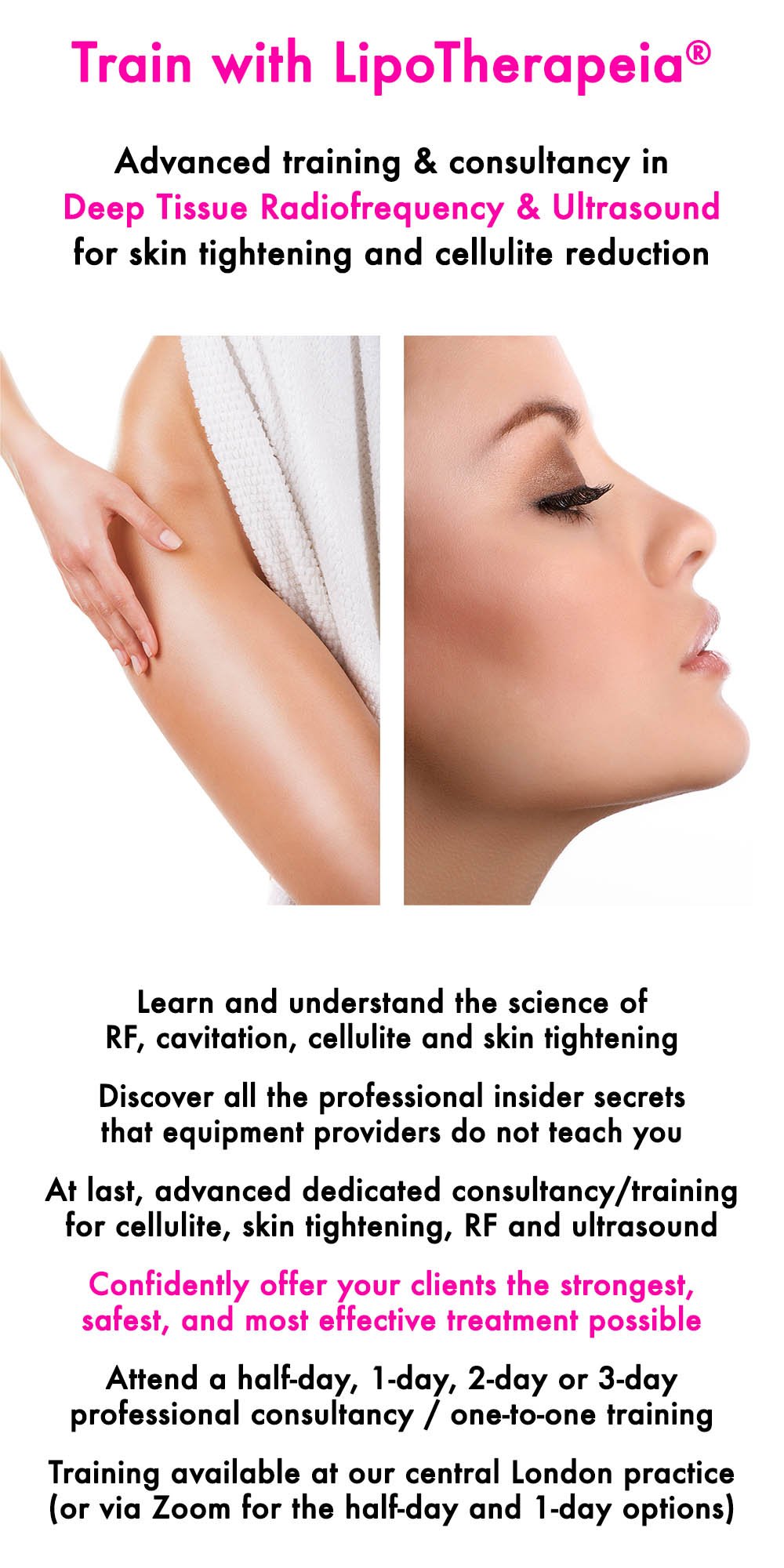How the anti-cellulite active forskolin stimulates lipolysis (fat breakdown) in adipocytes (fat cells)
Our Beachy Legs articles are a practical way to share our experience in cellulite and skin tightening, from our London clinic with everyone in the world. Check all our articles here. And if you do live in London, you can book an assessment, consultation or treatment with us here.
Forskolin stimulates lipolysis in adipocytes via significant cAMP release
Forskolin in cellulite creams
Forskolin in food and nutritional supplements
More detail on this study
Rate-limiting steps in isoproterenol and forskolin stimulated lipolysis
Check our professional consultancy for a masterclass in radiofrequency, ultrasound cavitation, cellulite and skin tightening
Forskolin stimulates lipolysis in adipocytes via significant cAMP release
The natural lipolytic chemical forskolin was found in this study to release fat from fat cells, via significant cAMP production in fat cells.
This significant cAMP production should normally stimulate much more fat release than evidenced by the experiment.
Nevertheless the lipolytic effect of forskolin was found to be very impressive, as it compared well to the noradrenaline analogue isoproterenol, which is the gold standard in lipolysis.
In fact, forskolin was found to be stronger in its lipolytic action than noradrenaline itself.
This study confirms that forskolin is clearly THE strongest natural lipolytic natural active and it is an ideal anti-cellulite / topical fat reduction cream ingredient, used on it's own or in combination with caffeine and other synergistic actives.
Forskolin in cellulite creams
The rare and very expensive anti-cellulite cream ingredient forskolin is the main active molecule in the south asian plant coleus forskohlii, also known as plectranthus barbatus.
Due to its cost, forskolin is only contained in very few high-end anti-cellulite formulations.
(Most cellulite creams do not contain pure forskolin or they contain very diluted coleus forskohlii extracts.)
Instead most cellulite creams contain cheap caffeine, which on its own is not nearly as effective as forskolin.
Forskolin is the most important lipolytic ingredient for use in cellulite creams and its effectiveness is maximised by caffeine (caffeine further increases cAMP production, by inhibiting cAMP’s breakdown by the phosphodiesterases PDE3 and PDE4).
A concentrated cream rich in forskolin (and ideally liposomal caffeine too) can topically stimulate fat release in stubborn hypodermal fat cells (cellulite), something which cannot be achieved by diet or exercise alone.
Forskolin is also known to stimulate blood circulation (caffeine is also known of this effect), which is excellent for cellulite prevention and reduction.
Forskolin in food and nutritional supplements
As expected, taking forskolin supplements does not result weight loss, as all forskolin does is release fat out of fat cells.
This is the same as caffeine: all caffeine does is stimulate the release of fat out of fat cells.
Forskolin (and caffeine) does not stimulate fat oxidation in muscles or organs, which would result in weight loss. For weight loss, exercise and diet is always needed.
More detail on this study
In this research study, the effects of two lipolytic chemicals, isoproterenol and forskolin, on fat cell metabolism were investigated using a laboratory technique involving incubated fat cells.
The results showed that both chemicals increased:
Glycerol release, which evidences lipolysis
Levels of cyclic AMP in fat cells
The activity of the important lipolytic enzyme protein kinase
The effects of forskolin were greater than those of isoproterenol, for all the three variables above.
When the two chemicals, forskolin and isoproterenol, were used together, there was a further increase in cyclic AMP levels but no additional increase in protein kinase activity or glycerol release.
These findings suggest that the maximum rate of fat breakdown in response to isoproterenol is limited by the amount of cyclic AMP produced, while the response to forskolin may be limited by a different mechanism downstream of cyclic AMP production.
At high concentrations of forskolin or when used with isoproterenol, the levels of cyclic AMP exceeded the amount needed to fully activate protein kinase and fat breakdown.
The results of this study suggest that the chemicals isoproterenol and forskolin can increase the breakdown of fat in fat cells, as measured by increased levels of glycerol, cyclic AMP, and protein kinase activity.
The effects of forskolin were more pronounced than those of isoproterenol for all three variables. The researchers concluded that it is possible that forskolin chemicals can be used to reduce local fat deposits, by promoting the breakdown of fat in fat cells.
Rate-limiting steps in isoproterenol and forskolin stimulated lipolysis
Research paper link: http://www.ncbi.nlm.nih.gov/pubmed/2983738
Abstract: Using the flask-incubated fat cell system, effects of isoproterenol and forskolin on glycerol release, cyclic AMP levels and protein kinase were studied. Isoproterenol increased cyclic AMP levels, protein kinase activity and glycerol release over the same concentration range (10(-9) M to 10(-6) M). Forskolin also increased all three variables in a concentration-dependent manner (10(-7) M to 10(-4) M). The maximum response for each variable was significantly greater with forskolin than with isoproterenol. A combination of isoproterenol and forskolin resulted in an additional increase in cyclic AMP over forskolin alone, but no significant increase in protein kinase activity or glycerol release. These results support the concepts that the maximum lipolytic response to isoproterenol is limited by the accumulation of cyclic AMP and the maximum lipolytic response to forskolin is limited by some step distal to cyclic AMP production, possibly activation of protein kinase. At high concentrations of forskolin or with a combination of forskolin and isoproterenol, cyclic AMP levels were in excess of those needed to maximally activate protein kinase and lipolysis.
Check our professional consultancy for a masterclass in radiofrequency, ultrasound cavitation, cellulite and skin tightening
Do you want to deeply understand radiofrequency, ultrasound cavitation, cellulite and skin tightening? Attend a half-day, 1-day or 2-day or 3-day professional consultancy / one-to-one training and confidently offer your clients the safest, strongest and most effective treatment possible. Service available via Zoom or at our central London practice.




![How to get rid of cellulite | 111 tips from the experts [2024 update]](https://images.squarespace-cdn.com/content/v1/5294cad9e4b009e918124a61/1582205124442-U31A5ECGNCG62VFPPJWJ/How+to+get+rid+of+cellulite+in+2020.jpg)


